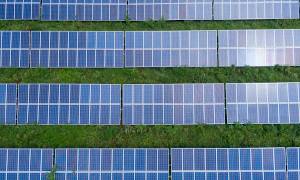
The School of Science and Technology of the NOVA University Lisbon (FCT NOVA), in cooperation with the University of York, in England, reveals that a new design of the solar cells increases the light absorption capacity by 125%. Research can be decisive to increase and generalize the use of solar energy.
The study, carried out at the Materials Research Center of Nova (CENIMAT), shows the impact of different surface structures on the absorption of light in solar cells that, when coupled, form solar panels. Researchers from FCT NOVA and the University of York believe that this new design of solar cells can lead to the production of thinner, lighter and more flexible solar cells, which can supply energy to more homes and be used in a greater variety of products.
NOVA proves its commitment to the UN 2030 Agenda for Sustainable Development. Ensuring access to reliable, sustainable, modern and affordable energy for all corresponds to the seventh Sustainable Development Goal (SDG) defined as a priority by the United Nations body for this decade.
The new solution presented by scientists from Portugal and the United Kingdom should be enthusiastically received by the energy sector, which is constantly looking for ways to increase the absorption of light in solar cells with light materials, which can be used in various products, from solar tiles even boat sails and camping equipment.
Solar grade silicon - used to create solar cells – is very energy intensive to produce, so creating slimmer cells and changing the surface design would make them cheaper and more environmentally friendly. Christian Schuster from the Department of Physics said: “We found a simple trick for boosting the absorption of slim solar cells. Our investigations show that our idea actually rivals the absorption enhancement of more sophisticated designs - while also absorbing more light deep in the plane and less light near the surface structure itself. Our design rule meets all relevant aspects of light-trapping for solar cells, clearing the way for simple, practical, and yet outstanding diffractive structures, with a potential impact beyond photonic applications. This design offers potential to further integrate solar cells into thinner, flexible materials and therefore create more opportunity to use solar power in more products.”
The study suggests the design principle could impact not only in the solar cell or LED sector but also in applications such as acoustic noise shields, wind break panels, anti-skid surfaces, biosensing applications and atomic cooling.
Christian Schuster added: “In principle, we would deploy ten times more solar power with the same amount of absorber material: ten times thinner solar cells could enable a rapid expansion of photovoltaics, increase solar electricity production, and greatly reduce our carbon footprint. “In fact, as refining the silicon raw material is such an energy-intensive process, ten times thinner silicon cells would not only reduce the need for refineries but also cost less, hence empowering our transition to a greener economy.”
Photo: FCT NOVA
In the news (in Portuguese)